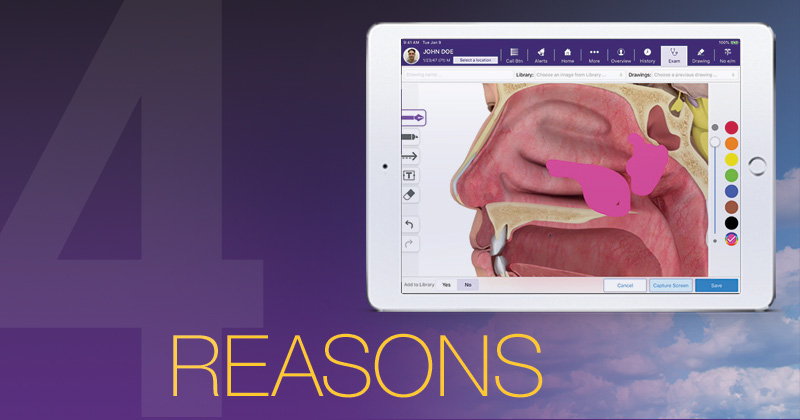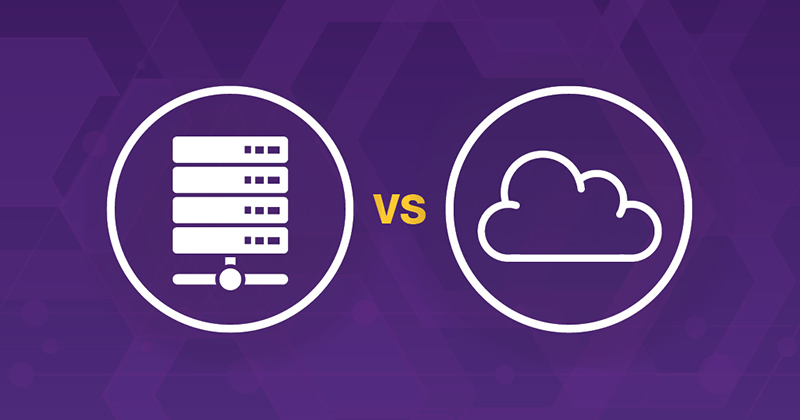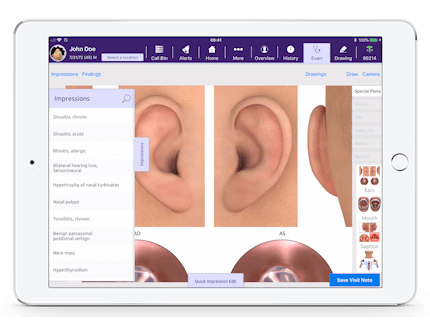4 Reasons ENT Cloud Software is a Good Choice for Otolaryngologists

Here’s why an ENT EHR is better in the cloud.
Web-based. Software as a service (SaaS). Cloud computing. Subscription model. These words can all describe cloud software. When it comes to ENT electronic medical record (EMR) software, you can opt for a server-based model or select ENT cloud software for your practice. If you’re looking for the best ENT EHR to help you improve workflow efficiencies to boost productivity, speed up patient processing, automate billing and improve ease of use, you’ll want to strongly consider an ENT cloud software solution.
I favor a cloud-based model for a number of reasons. At the end of the day, you have to decide what option will work best to achieve your business goals and successfully manage your practice.
Defining Cloud-based Software or SaaS
 Before we dive into the direct benefits of ENT cloud software for you and your practice, let’s first set the stage by defining cloud computing. According to Techopedia.com, cloud computing is the use of various services, such as software development platforms, servers, storage and software, over the Internet, often referred to as the “cloud.” Generally speaking, cloud computing vendors have three common characteristics: the vendor manages the back end of the app, the end user pays only for services used, and the end user experiences enhanced scalability.
Before we dive into the direct benefits of ENT cloud software for you and your practice, let’s first set the stage by defining cloud computing. According to Techopedia.com, cloud computing is the use of various services, such as software development platforms, servers, storage and software, over the Internet, often referred to as the “cloud.” Generally speaking, cloud computing vendors have three common characteristics: the vendor manages the back end of the app, the end user pays only for services used, and the end user experiences enhanced scalability.
Consider your monthly subscription to Spotify, Netflix or even Microsoft Office, as all are cloud-based services. This same subscription-based, cloud approach these consumer focused companies take, can also apply to your ENT EMR system. If you’re not on a cloud EMR system, you’re probably using a server-based model, which from my experience, is not ideal for running an ENT practice in the 21st century.
Tuning in to the Benefits of ENT EMR Software
As I outline some of the primary benefits of cloud ENT software, keep in mind that I’m comparing it to the less ideal server-based option commonly found with legacy EMR systems. If you’re still utilizing paper charts, then these benefits you’ll experience from the cloud can also apply.

1. Budget friendly. Whenever the opportunity arises to cut costs without sacrificing quality—or even improving it—I’m all ears. With cloud software, you eliminate the need to have costly physical servers in your office. This can lower your upfront hardware and installation costs, and you will often experience lower costs with a subscription-based model. EHR servers don’t last forever and typically need to be replaced every 3-5 years, in addition to requiring maintenance and often dedicated IT staff to manage them (cue extra costs). They also take up quite a bit of physical space that could reduce areas for patients in your waiting room or even another exam room, costing you money.

2. Convenient. When implementing a new software system, the more you can minimize interruptions to your regular business operations, the better. With ENT cloud software, you forgo a majority of hardware setup, and more likely than not, you’ll have the ability to keep your ENT practice open during go-live. This is drastically different from what it would be with an EHR server. Although you’ll likely experience an adjustment period during implementation, and you may reduce your patient load a bit, opting for cloud software can work to greatly minimize interruptions to your daily workflow. Some EMR software will even be available as a native iPad app, making you more mobile in the office and exam room. You won’t feel tied down to a desktop, but instead can use the iPad EMR to tap and swipe your way through an exam, all while facing your patient instead of turning your back. It can truly enhance the patient’s overall experience, and we all know how important a patient’s opinion can be in the age of online reviews and social media.
Additionally, ENT cloud software provides you with access to your EMR’s information from virtually wherever you have an Internet connection. Whether it’s checking on a patient’s prescription history from home, working from another office, visiting a patient at the hospital or enjoying a vacation, medical records are accessible. This gives you the ability to work from where you want, when you want. Some cloud EMR systems, like EMA™, can also aid in collaboration allowing users to simultaneously access the same chart.
3. Low-maintenance. With ENT cloud software, the IT vendor—in my case Modernizing Medicine—supports the software, which can help reduce the potential need for IT resources in the practice. Fewer IT staff equates to fewer salaries to pay and employees to manage. With the cloud, your ENT EMR update will occur automatically, and you won’t incur additional fees. What if your practice expands either by the number of providers on staff or by the number of physical locations? With the cloud, your EMR vendor can expand capacity as needed, and you won’t have the burden of purchasing and installing more hardware as you would with a server-based option. Regardless of location, all employees would have the ability to access the same information, depending on their assigned permissions.
4. Secure. How can you safeguard medical records from unpredictable situations such as natural disasters and theft? ENT EMR software that’s based in the cloud can be a way to help with both as a result of its frequent backups, resilient storage, load balancing and multiple availability zones to help protect data. That can’t be said of a server, which can incur physical damage and carries a higher risk regarding potential theft.
A Word From Our Clients on Their ENT EMR Software
What’s one of the best sources of information to really understand how ENT cloud software benefits a practice? Doctors who use that software in their practices. Below are just a couple of ENT clients who have reaped the benefits from our ENT EMR software.
“Whether Dr. Walker is on call, at our other office location or at a hospital, she can log into EMA from virtually anywhere and access the information she needs. She also loves having the ability to ePrescribe, particularly narcotics, which she can do in seconds. The convenience of the cloud ENT software has made our lives a lot less hectic,” said Tracy Carpenter, office manager at Joplin Ear, Nose & Throat.
“Another aspect of EMA that improves efficiency is that it’s a cloud ENT EMR. I can look up patient information from virtually anywhere if needed while I’m out of the office. I’m very happy that I made the switch to EMA,” shared Dr. Bert Brown of Cleveland Ear Nose and Throat, Inc.
If you want to evaluate a server vs. cloud EMR, read our comparison guide or request a demo today. As the landscape of medicine and technology continue to change at an accelerated rate, having the right technology such as ENT cloud software can help prepare you now and for the future.





